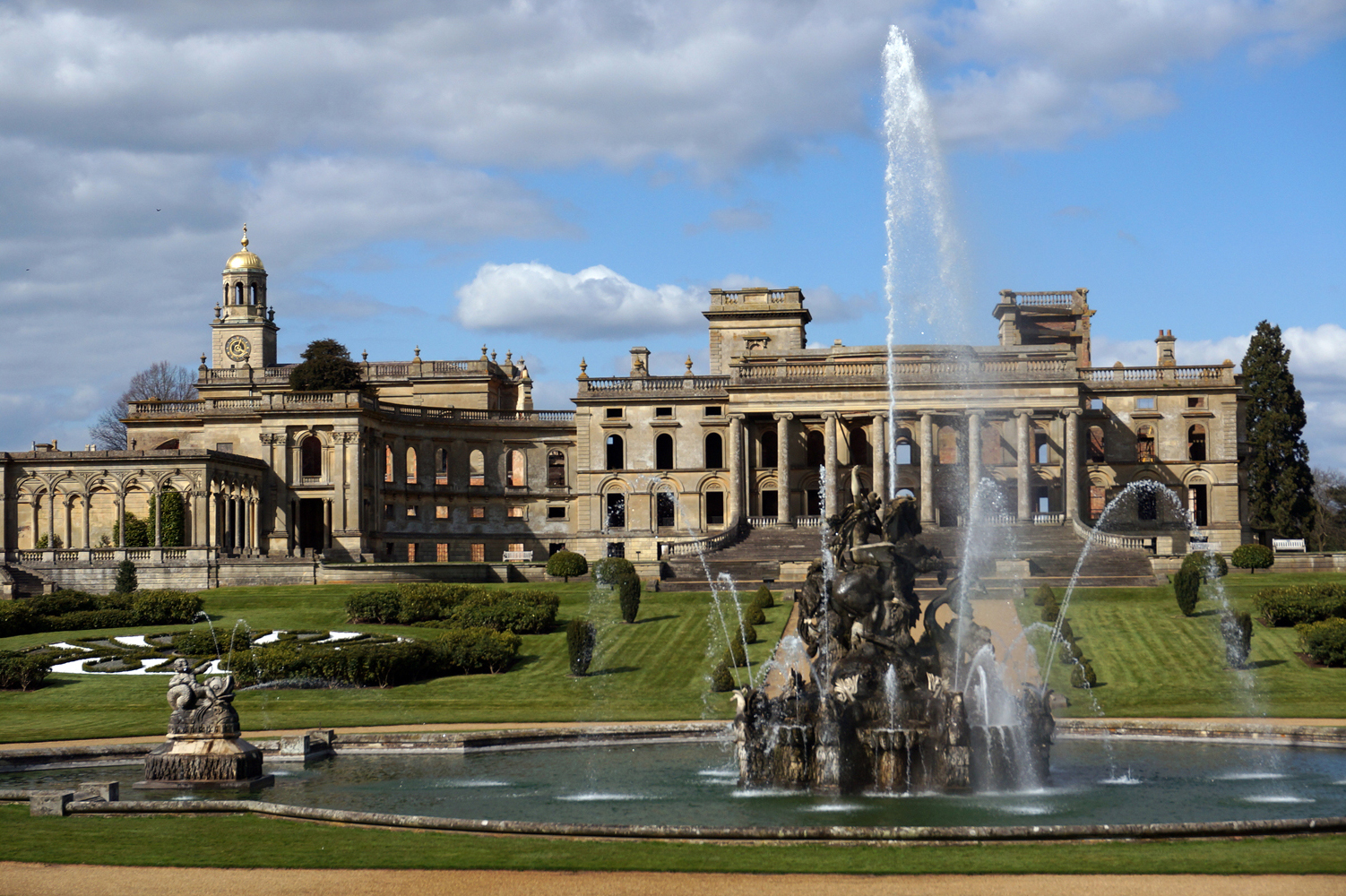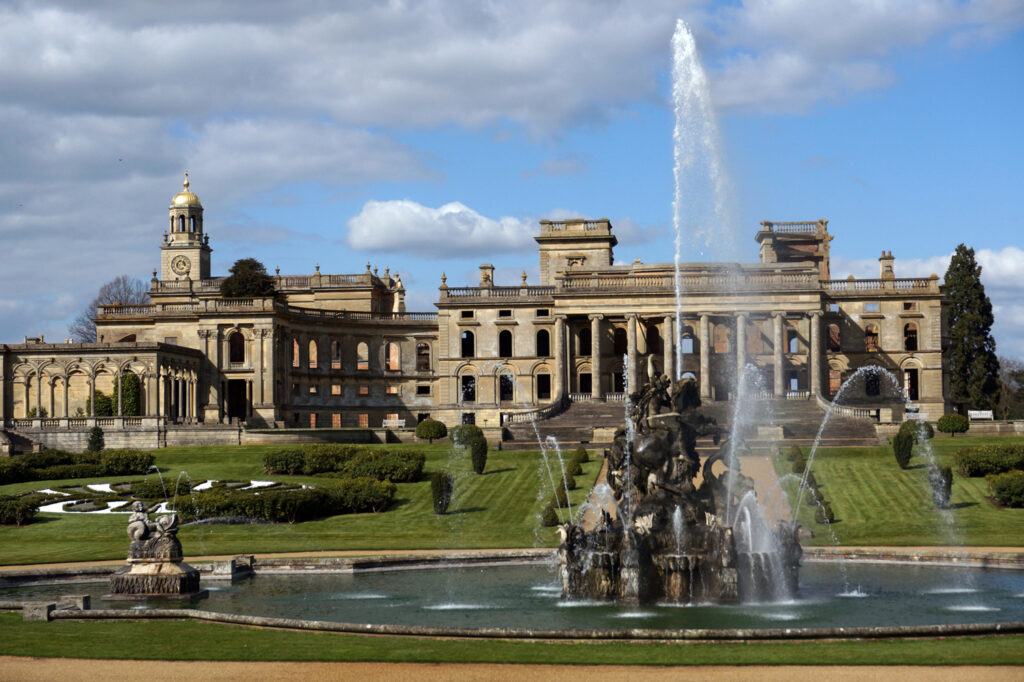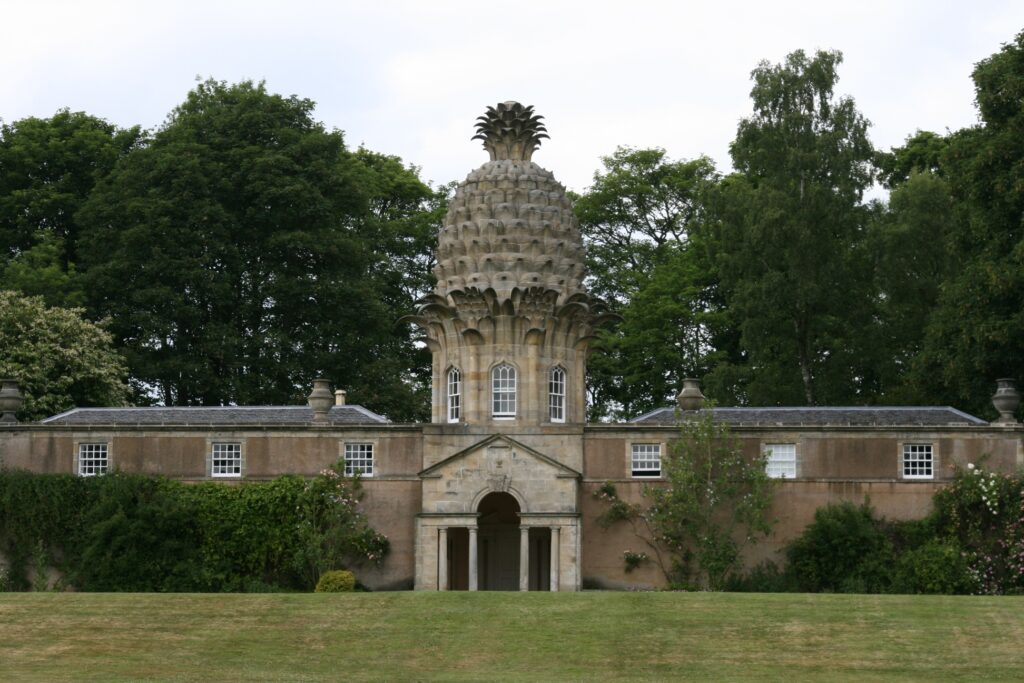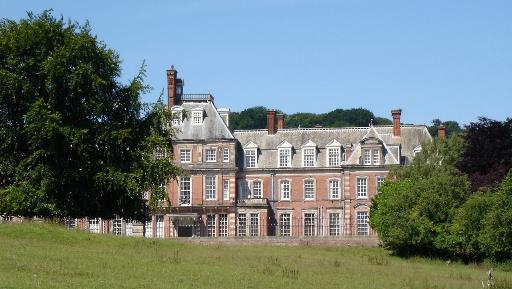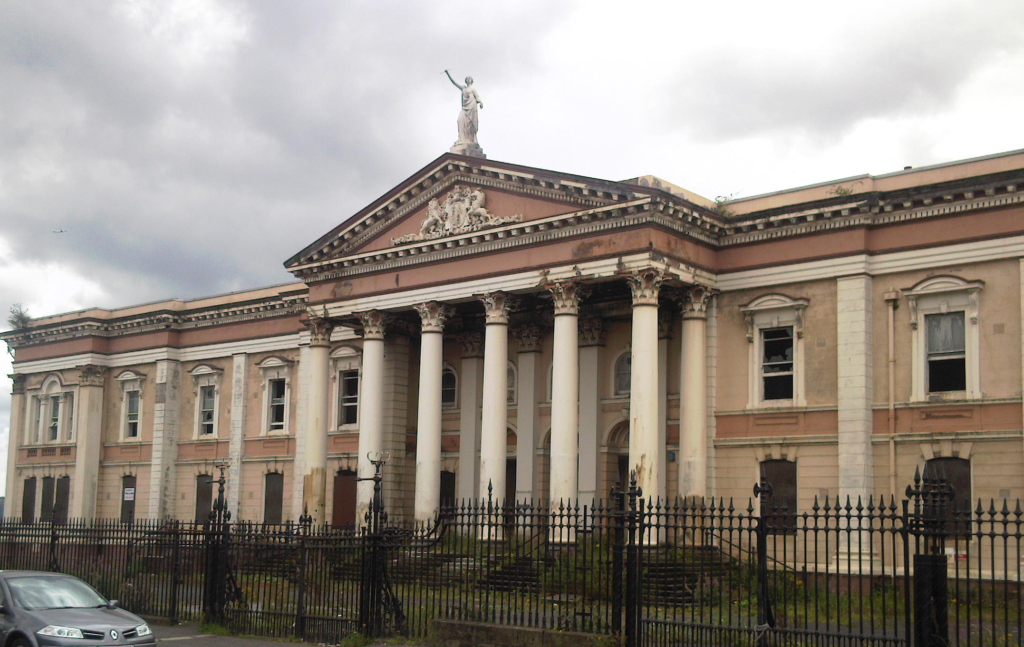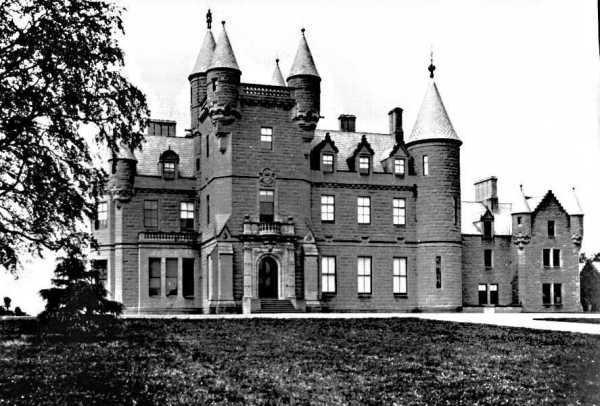Some half-ruined buildings are too unusual, beautiful, or historically significant to be demolished, yet their state of decay is so severe that restoration is impossible. As a result, they stand for decades, crumbling, becoming part of the landscape, and attracting curious tourists and lovers of the mysterious. Britain is full of such ruins — landmarks that no one quite knows what to do with.
Abandoned Britain: The Stone Pineapple, the “Welsh Versailles,” and the IRA Courthouse
Witley Court, Worcestershire
Once one of the most luxurious country houses in England, Witley Court was filled with the glow of ballroom chandeliers, the sound of music, and the chatter of aristocrats. Originally built in the 17th century, it was expanded and remodelled twice in the 19th century. Ownership also changed hands: the estate was first commissioned by the Foley barons, later passed to the Earls of Dudley, and eventually, after the latter’s financial decline, was acquired by local carpet magnate Sir Herbert Smith. However, Smith owned numerous properties in Britain and abroad, rarely visiting Witley Court, despite maintaining a full household staff there.
In 1937, a fire broke out in the kitchen. The servants attempted to extinguish the flames using an old pump, but it had long since rusted. The fire destroyed the roof, an entire wing, and much of the interior. Smith never attempted to restore the house. Today, the ruins of the mansion look like a setting from a Gothic novel: grand colonnades entwined with ivy, cracked walls, and overgrown garden terraces. The English Heritage Trust maintains the ruins in a stable condition, but restoration is considered unlikely due to the enormous costs involved.
Dunmore Park House, Scotland
This grand mansion northwest of Edinburgh was built in 1761 as a country residence for John Murray, Earl of Dunmore and the last colonial governor of Virginia under British rule in America. Designed as a blend of various architectural styles, the estate boasts one of the strangest features in Britain — a greenhouse pavilion with a massive stone dome shaped like a pineapple. The choice of decoration is no coincidence: after Christopher Columbus brought the first pineapples to Europe in 1493, the fruit became such a prized delicacy that it symbolised power and wealth.
Over time, the house fell into disrepair, and after being used as a hospital during World War II, it was abandoned entirely. Today, Dunmore Park House is a moss-covered ruin, where the walls still bear traces of former grandeur, but the roof has long since collapsed. The site attracts photographers and history enthusiasts, though no one has dared to invest in its restoration. There is, however, a glimmer of good news: in the late 20th century, the pavilion with its 14-meter-high pineapple dome was fully restored and is now available to rent as a summer retreat.
Kinmel Hall, Wales
This enormous country estate in North Wales, known as the “Welsh Versailles,” was built in the 1870s by a local coal magnate for extravagant receptions. However, its upkeep proved too costly. Over time, the building changed hands multiple times, serving as a boys’ school, a sanatorium, a girls’ school, a military hospital, and a hotel. In 2001, it was finally abandoned.
Today, Kinmel Hall stands as a magnificent but slowly dying ruin, with shattered windows, crumbling stucco, and overgrown gardens. Several attempts have been made to sell it, but restoration would require millions of pounds, and for now, the mansion continues to deteriorate.
Crumlin Road Courthouse, Northern Ireland
Built in the mid-19th century, this Belfast courthouse was once a cornerstone of Northern Ireland’s justice system. It hosted high-profile trials, particularly during the Troubles. Notably, Crumlin Road Courthouse was where 22 individuals suspected of IRA involvement were collectively sentenced to a total of 4,000 years in prison. The courthouse was closed in 1998 and has stood empty ever since.
Although there have been proposals to convert the building into a hotel or cultural center, Crumlin Road Courthouse seems to be cursed: it suffered severe damage in three fires in 2009 and another in 2020. Today, it remains a grim reminder of the region’s troubled past, slowly decaying with no clear future in sight.
Buchanan Castle, Scotland
Now a crumbling ruin near Glasgow, Buchanan Castle was built in the 19th century as the residence of the powerful Graham clan, replacing their previous estate, which had been destroyed by fire. The new project was completed in record time but bore little resemblance to the austere Victorian original — it was designed in the Scottish “baronial style,” complete with turrets and battlements.
The “barons” themselves lived in the castle until 1925, after which Buchanan Castle served as a hotel and a military hospital. Notably, it was here that Adolf Hitler’s deputy, Rudolf Hess, was briefly held. In 1941, Hess flew solo to Scotland in an attempt to negotiate Britain’s withdrawal from World War II, only to be captured and sentenced to life imprisonment. One way or another, after the war, Buchanan Castle was abandoned. Today, only its thick stone walls remain — the roof has long since collapsed.
Britain is rich in relics of the past — places that whisper their stories through the cracks in their walls. Perhaps, one day, someone will find a worthy use for them. But if not — at the very least, they make for an excellent backdrop for eerie photoshoots.

